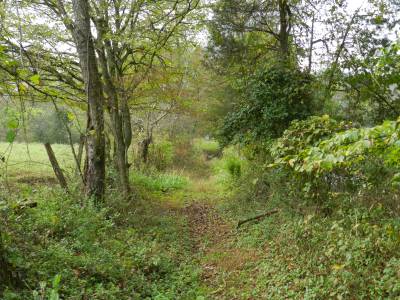Tom Dooley - An update III
The is just a short update on Tom's closests relatives. The information in this article is based on the 1840 census records. The 1840 records are rather interesting, but unfortunately not very informative. But you can read someth ing from them. In this census, only the name of the Head of Household is given, and any other member of the household is just mentioned by sex, and age group.
In the case of Tom Dooleys father, Thomas P. Dula, the records states that the household consisted of one male, age 40-50 (that's Thomas himself, born in 1794). Two other males are mentioned, one boy of an age between 5 and 9, and one boy, age 10 to 14. Those two boys are most likely William (the oldest, born around 1829) and John (the younger, born around 1834). Tom is not yet born. This indicates that I was problably wrong in my article about Tom Dooley, when I thought there might have been three older brothers, William, John and Lenny. In this case the 2013 book by Dr. John Edward Fletcher, "The true story of Tom Dooley" is probably correct, when it claims, that Tom only had two brothers (William L. and John R.). The Lenny that later sources believe died during the war, was actually William L, who may very well have been known as Lenny. I'll get back to this book - and the brothers - in a later update. But these entries in the records only confirm, what we already know. It's the females, that makes the entry interesting.

The photo on the left, shows the path leading up to the Dula Family Cemetery, on land once belonging to Tom Dooley's grandfather, Bennett Dula, and his uncle, Bennett Jr. Tom's father, Thomas P. is likely buried here in an unmarked grave. The only marked grave is Tom's own.
According to the records, the household consisted of one female 30 to 40. That is of course Mary Dula, born around 1800. One female under 5 must be Eliza, born around 1836. A female between 5 and 9 is the daughter, Sarah, born around 1832. Another female age between 10 and 14 is most likely Anna, born around 1827. But then comes the surprise. There was another female in the household in the age between 15 and 19! No other sources I have been able to locate so far, talks about another daughter. It is of course possible, that Thomas and Mary had a daughter (or even more) between their marriage in 1822 and Anna's birth in 1827. Some sources claims that Anna was born in 1824, and in that case, she could the girl between 15 and 19, but who then was the younger girl? I don't know until I get confirmation from other sources. Unfortunately I haven't been able to find Thomas P and his family in the 1850 census, but maybe someday I will, and maybe that could put a name on the unknown young woman. A strange thing is, that when Thomas enrolled his children in the school system in 1841, he only enrolled Anna, Sarah, Eliza, William and John. This could indicate that the unknown girl was not a child of the family, but maybe a live-in servant. Either a farm laborer or a house servant, most likely the latter. If this is true, it indicates that the family was better off than normally supposed, at least when Thomas P. was still alive.
And maybe yet another surprise. According to ancestry.com there was another person in the household. A female slave between the age of 10 and 22! I don't know where ancestry.com got this information, as the census records only show free black and free white people, not slaves. I have no reason to doubt the entry though. The slave could be part of Thomas' inheritage from his father, Bennett, who passed away shortly after Thomas P. and Mary married in 1822. Or maybe she came to him, when his mother, Anna, gave up running the farm on her own and passed it on to one or more of her sons. We know that in 1850 she lived on the farm with her youngest son, Bennett Jr., and his family. Of course Thomas P. may also have bought the slave himself. In any case, owning a slave certainly doesn't place Thomas P. and his famility among the poor people of the area. So we have to accept, that this part of the Dula clan, although not rich, were not poor either.